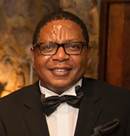Day 1 :
Keynote Forum
Vsevolod V. Gurevich
Vanderbilt University Medical Center, USA
Keynote: Recent advancement and discoveries in synthetic biology
Time : 10:20-10:55

Biography:
Vsevolod V. (Seva) Gurevich has completed his PhD in 1989 from Shemyakin Institute of Bio-organic Chemistry, Moscow, Russia, and postdoctoral training (1991-5) in the laboratory of Dr. J.L. Benovic, Thomas Jefferson University, Philadelphia, PA. He is Professor of Pharmacology at Vanderbilt University. He has published more than 160 papers in reputed journals and has been serving as an editorial board member of several journals.
Abstract:
Synthetic biology is a relatively new and very exciting brunch of research. In simple terms, its goal is to create living cells that do what we want. To achieve this, we need precise mechanistic knowledge of cellular processes. In terms of complexity, living systems exceed everything studied by natural sciences. Complex networks of intimately intertwined signaling pathways regulate cellular functions. Mechanistic understanding how the integration of multiple inputs produces coherent behavior is one of the major challenges of cell biology. Perfectly timed highly regulated protein–protein interactions and precise targeting of the “output” proteins to particular substrates are a common themes of in cellular signaling. Synthetic biology approaches this at different levels. Many signaling proteins consist of numerous domains. By mixing and matching domains, in essence following in the footsteps of evolution, we can create new signaling proteins with unique functions. This is particularly applicable to scaffolding proteins, which organize and direct signaling. Another level is subtle reengineering of signaling proteins. Most proteins are multi-functional. Disrupting or enhancing individual functions by targeted mutations, ideally without affecting other functions of the protein, generate tools that can channel cell signaling in desired direction. Creating new proteins with subtly or drastically modified functionality paves the way to better understanding of the mechanisms used by living organisms. As an added bonus, engineered proteins have greater therapeutic potential than currently used small molecules, which tend to be one-trick ponies. Thus, synthetic biology holds many exciting promises. It is our job to convert the understanding of biochemical mechanisms into the ability to create designer cells for scientific and therapeutic uses.
Keynote Forum
Makobetsa Khati
CSIR Biosciences, South Africa
Keynote: Synthetic RNA molecule mitigates HIV-induced apoptosis of cardiomyocytes and also prevents HIV infection
Time : 11:15-11:50

Biography:
Makobetsa Khati is Head of the Emerging Health Technologies Department at CSIR Biosciences. He is also an Honorary Research Associate in the Department of Medicine at Groote Schuur Hospital and the University of Cape Town. Makobetsa holds several degrees including a Master’s in Molecular Medicine from the Imperial College London, a Master of Public Health from the School of Public Health and Family Medicine, University of Cape Town, and a Doctorate in Molecular Pathology from the Sir William Dunn School of Pathology, University of Oxford.
Abstract:
Chronic HIV infection causes a broad range of clinical complications, some of which remain poorly understood. One such complication is HIV-associated cardiomyopathy (HIVCM). In this study, we evaluated a novel approach to mitigate HIVCM using synthetic RNA molecules called aptamers. Specifically, we used a shortened synthetic derivative of anti-gp120 aptamer called UCLA1. The aptamer protected cardiomyocytes from HIV induced apoptosis. Furthermore, the aptamer also prevented infection of human macrophages and CD4+ T cells by a broad range of clinical isolates of HIV-1 from different subtypes. Taken together, these data argue in favor of further development of this RNA synthetic molecule to prevent HIV infection in uninfected individuals, and also to mitigate AIDS pathogenesis such as HIVCM in already infected individuals.
Keynote Forum
Ravi K Birla
University of Houston, USA
Keynote: Tissue and organ fabrication for the heart
Time : 11:50-12:25

Biography:
Ravi Birla has completed his PhD from the University of Michigan, Ann Arbor and is currently with the Department of Biomedical Engineering at the University of Houston, where he also serves as Director of the Artificial Heart Laboratory. His research is in Cardiovascular Tissue Engineering and he has published over 40 peer reviewed scientific. He has extensive experience in the development of 3D models for heart muscle, blood vessels, tri-leaflet heart valves, heart pumps, bio-artificial ventricles and bio-artificial hearts. Dr. Birla holds several patents in the area of cardiovascular tissue engineering. He is also actively engaged in education and teaching related activities and has recently published a comprehensive textbook in the area of functional tissue engineering.
Abstract:
Treatment of cardiovascular disorders remains a major medical challenge. Pharmacological interventions, mechanical assist devices and heart transplantation have provided life saving options. While heart transplantation has been the most successful treatment modality for end stage heart failure, chronic shortage of donor organs has limited widespread applicability. Tissue engineering has tremendous potential to provide alternative treatment modalities that could help alleviate the donor heart crisis. Cardiac tissue engineering strategies are focused on the development of functional 3-dimensional (3D) patches, fabricated by culturing cells within a natural or synthetic scaffold. Applied to a clinical scenario, 3D heart muscle could be sutured onto the surface of injured left ventricular tissue to support/augment contractile function.
Research at the Artificial Heart Laboratory (AHL) is focused on the development of 3D cardiovascular tissue constructs. We have projects focused on the development of heart muscle, blood vessels, tri-leaflet valves, cell based cardiac pumps, bioartificial ventricles and hearts. In addition, we have projects focused on supporting technologies. Th ese include perfusion systems to support long-term culture and bioreactors for electromechanical stimulation. During the past several years, we have developed the building blocks required for the fabrication and culture of cardiovascular tissue constructs – in this presentation, we will provide an overview of platform technology required to bioengineer functional 3D cardiovascular tissue constructs.
- Workshop
Location: Canterbury
Session Introduction
Makobetsa Khati
CSIR Biosciences, South Africa
Title: Prospects of synthetic molecules in medicine
Time : 12:25-13:30

Biography:
Makobetsa Khati is Head of the Emerging Health Technologies Department at CSIR Biosciences. He is also an Honorary Research Associate in the Department of Medicine at Groote Schuur Hospital and the University of Cape Town. Makobetsa holds several degrees including a Master’s in Molecular Medicine from the Imperial College London, a Master of Public Health from the School of Public Health and Family Medicine, University of Cape Town, and a Doctorate in Molecular Pathology from the Sir William Dunn School of Pathology, University of Oxford.
Abstract:
Synthetic oligonucleotide molecules such as aptamers can be isolated in vitro against diverse targets including toxins, bacterial and viral proteins, virus-infected cells, cancer cells and whole pathogenic microorganisms. These synthetic molecules assume defined three-dimensional structures and generally bind functional sites on their respective targets. They possess the molecular recognition properties of monoclonal antibodies in terms of their high affinity and specificity. The applications of aptamers range from diagnostics and bio-sensing, target validation, targeted drug delivery, therapeutics, templates for rational drug design to biochemical screening of small molecule leads compounds. In this presentation, I will review recent progress made in the application of bio-medically relevant aptamers and relate them to their future clinical prospects.
Ravi K Birla
University of Houston, USA
Title: Recent advances in Cardiac tissue engineering
Time : 14:30-15:30

Biography:
Ravi Birla has completed his PhD from the University of Michigan, Ann Arbor and is currently with the Department of Biomedical Engineering at the University of Houston, where he also serves as Director of the Artificial Heart Laboratory. His research is in Cardiovascular Tissue Engineering and he has published over 40 peer reviewed scientific. He has extensive experience in the development of 3D models for heart muscle, blood vessels, tri-leaflet heart valves, heart pumps, bio-artificial ventricles and bio-artificial hearts. Dr. Birla holds several patents in the area of cardiovascular tissue engineering. He is also actively engaged in education and teaching related activities and has recently published a comprehensive textbook in the area of functional tissue engineering.
Abstract:
There has been an increase in the number of research papers describing the fabrication of 3D heart muscle models. Many different biomaterials have been used, several stem cell types have been used and many different bioreactor configurations have been evaluated. The first paper in the field of cardiac tissue engineering was published in 1997 and now 17 years later, we have made significant progress. In this discussion, I will review some of the recent advances in the field of heart muscle tissue engineering and discuss and describe some of the more significant advances. Furthermore, I will also highlight many of the scientific and technological hurdles that need to be overcome in order to move the field of cardiac tissue engineering forward. I will use examples from the Artificial Heart Laboratory (AHL) at the University of Houston.
- Protein Engineering Design and Selection | Industrial Synthetic Biology | Animal Cell and Tissue Engineering
Location: Canterbury

Chair
Ravi K Birla
University of Houston, USA

Co-Chair
Makobetsa Khati
CSIR Biosciences, South Africa
Session Introduction
Robert J Schwartz
University of Houston, USA
Title: Conversion of adipogenic mesenchymal stem cells into mature cardiac myocytes
Time : 15:30-16:00

Biography:
Robert J. Schwartz, PhD is a Professor in the Department of Biology and Biochemistry and the Director of the Center for Molecular Medicine and Experimental Therapeutic. He previously was at Baylor College of Medicine in Houston, where he served as a tenured professor in the Departments of Cell Biology, Molecular and Cellular Biology, Medicine, and Molecular Physiology. He also was co-director of the Baylor College of Medicine Center for Cardiovascular Development. Schwartz also spent five years at the Institute of Biosciences and Technology where he was the Director of the Institute. During his more than thirty five years in Houston, Schwartz became widely recognized for his research on the developmental and genetic aspects of congenital heart disease. In this field he has received eleven US patents and co-founded three companies. He earned his B.S. from Brooklyn College and his PhD in Biology from the University of Pennsylvania.
Abstract:
ETS2 and MESP1 first used to convert human foreskin fibroblasts also, converted human adipogenic mesenchymal stem cell (hADMSCs) into cardiac progenitors (CPCs). These factors up regulated cardiac mesoderm cell surface markers, such as KDR, PDGFRa, and CXCR4 and a cadre of cardiac regulatory factors, but without the appearance of many calcium handling proteins. We then explored the role of 3D cardio-spheroids formed in a rotating Synthecon bioreactor that mimics microgravity on earth. Without the addition of any other reagent or drug we observed the robust induction of adult myosin heavy chains, contractile sarcomeres, ion channels, calcium handling channels and pumps in 3D cardio-spheres. We began to decode the gene expression network of ion channels, SR and t-tubules genes using cutting edge genetic informatics on the ground experiment and found that hypoxic signaling likely coordinates the appearance of many genes involved with calcium handling and myocyte maturation. Our experimental paradigm contributes to a novel regenerative strategy that enhanced myocyte maturation from converted human mesenchymal stem cells.
Vsevolod V. Gurevich
Vanderbilt University, United States
Title: Engineering signaling-biased arrestins for targeted regulation of cell behavior
Time : 16:00-16:30

Biography:
Vsevolod V. (Seva) Gurevich has completed his PhD in 1989 from Shemyakin Institute of Bioorganic Chemistry, Moscow, Russia, and postdoctoral training (1991-5) in the laboratory of Dr. J.L. Benovic, Thomas Jefferson University, Philadelphia, PA. He is Professor of Pharmacology at Vanderbilt University. He has published more than 160 papers in reputed journals and has been serving as an editorial board member of several journals.
Abstract:
Arrestins specifically bind active phopshorylated GPCRs, blocking further G protein activation and orchestrating G protein-independent signaling. Based on the elucidation of arrestin structure and key functional elements we constructed special arrestins to channel cell signaling in desired direction. We designed enhanced phosphorylation-independent arrestin-1 mutants and showed that they can compensate for the defects of rhodopsin phosphorylation in vivo. We identified the residues on the receptor-binding surface of non-visual arrestins that determine their preference for particular GPCRs. Based on this information we created arrestin-3 mutants with high receptor specificity by a few substitutions. We designed arrestin-3 mutant that suppresses JNK activation in the cell. We found that caspase-cleaved arrestin-2 facilitates apoptotic cell death, whereas its caspase-resistant mutant protects the cells. We also identified a small element of arrestin-3 that acts as a mini-scaffold, promoting JNK activation in vitro, in cells, and in the brain in vivo. Arrestins play a role in numerous signaling pathways and physiological processes. Therefore, targeted mutagenesis can yield arrestin-based molecular tools to tell the cell what to do in a language it cannot disobey.
Masoud Sheidai
ShahidBehesti University, Iran
Title: Olive biotechnology: The assessment of tissue culture induced genetic variability in olive (Oleaeuropaea) by molecular markers
Time : 16:50-17:20

Biography:
Masoud Sheidai has completed his PhD at the age of 28 years from Poona University in India and Sabbatical studies from UBC University in Canada. He is now proffessor of Biology in Shahid Beheshti University, Tehran, Iran. He has published more than 125 papers in reputed journals and has been serving as an editorial board member of repute. Gene Conserve, and Bidiversity journals.
Abstract:
Olive is one of the most important tree crops of the country and it is cultivated in many places. Propagation of true to type olive plants is important for many olive companies and farmers in the country and for this reason genetic analysis of randomly selected tissuebculture regenerated olive plants of cultivars Kroneiki, Zard, Roughani and X was performed and compared with the mother plant. We used Cp-DNA and RAPD molecular markers to check genetic fidelity versus somaclonal variation. Both RAPD and Cp-DNA analyses revealed that some of the regenerated plants differed extensively in their genetic content. These plants were placed in different clusters far from the mother plants in NJ tree and TNT tree obtained from these two molecular markers. We identified also some regenerated plants that were true to types of the mother plants. Th ese plants also diff ered in their morphological features. Genetic and morphological changes were more extensive with increase in subculture numbers. Different uses of these two types of plants will be discussed.
JEEVITHAN ELANGO,
Shanghai Ocean University, China
Title: Characterization of Type-II Fish collagen extracted from Shark cartilage and its potential effect on Rheumatoid arthritis

Biography:
Jeevithan was working as PA and SRF for four year in various research project mainly focusing on “purification and fractionation of active compounds from medicinal plants, mRNA based RT-PCR assay detection of viable pathogens, development of RFLP method for fish authentication and Fish gelatin, collagen films and scaffolds” in India. Then, he joined doctorate at Department of Marine pharmacology, College of Food Science and Technology, SHOU, China in 2013. Up to now, he has published 17 research papers in reputed journals. His current research is focused on the characterization of type-II collagen from different shark cartilages and its potential uses to treat rheumatoid arthritis.
Abstract:
Type-II pepsin soluble collagens (PSC) were isolated from cartilage of shark; and examined for their biochemical and antioxidant properties. The purified collagen was composed of an identical (α1)3 chains. The biochemical properties such as viscosity, solubility, amino acid composition, glycoprotein content, SEM, FTIR, CD and DSC spectra; and antioxidant properties substantiated that PSC could be used as a suitable biomaterial for pharmaceutical and biomedical industries as an alternative source of mammalian collagen. From the gut-sac (in-vitro intestinal absorption) experiments, we identified hydrolysates within a MW range from 70 kD to 8 kD on the serosal side of the intestine after the application of collagen hydrolysates and a significant amount of collagen hydrolysate is absorbed in the molecular form of 35-40 kDa. In continuation, type-II collagenous polypeptide (37 kDa) was successfully separated from the hydrolysates and studied for their physico-functional and antioxidant properties. Further, we target to confirm the effects of oral tolerance of PSC on inflammatory and immune responses to the ankle joint of rheumatoid-arthritis (RA) rats induced by Complete Freund’s Adjuvant. The immunological indexes such as delayed type hypersensitivity, IL-10 and T cell apoptosis showed that PSC with concentration of 10 μg/L could have significant effect in the model. The result of histological staining indicated that the recovery of the articular membranes of ankle joint in PSC group was greatly enhanced. In conclusion, the present results suggest that appropriate dose of PSC can not only ameliorate symptoms but also modify the disease process of RA.



